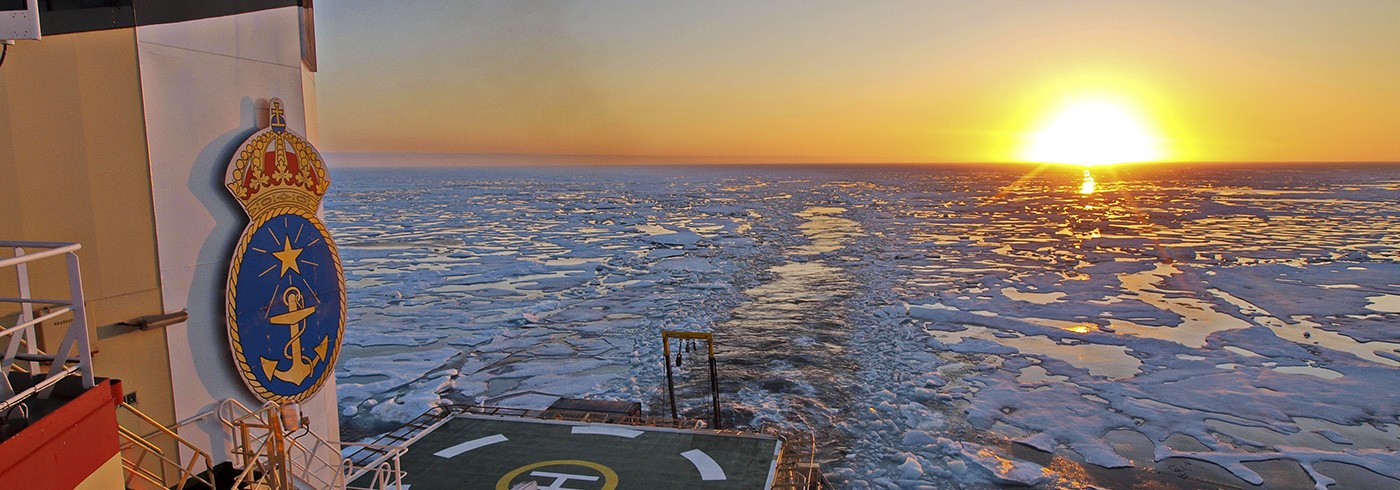Yesterday we anchored in the morning. We arrived to station no. 13, a location that was planned as station no. 15. Plans are adjusted to what we learn and see. We mapped the seafloor with the Multibeam to localize the best position for the station. We could as we approached the area see on the screen of the water column sonar how the release of methane from the seabed sent bubbles up in the water and painted the screen red. A lot of activity in the water! The location was known from previous expeditions. We tested in what direction Oden would drift when the propellers were stopped: 115 degrees. Oden steered upwind over the central station coordinate passed it with 100 meters as the anchor was lowered. At the precise second the Captain ordered the anchor to be put down on the sea floor: four shackles, five shackles. “Anchor hanging straight down” was reported from bow deck. Gave out shackle no. 6. The depth was around 70 meters. We cannot anchor deeper. The chain and anchor is heavy, 16 tonnes. Three shackles of chain laying on the seafloor and we were still.
Now work started with an intense activity. We had taken a drifting CTD station as we approached the station so the “water people” was already occupied but now the aft deck got crowded. The Multicorer was first to go. The instrument was loaded with plastic pipes that would sink down into the seabed once the instrument hit the bottom. It sits down, the weights of led are released and the instrument sink slowly into the sediments. Wait 30 seconds! Slowly up! Up to the surface carefully up above the surface, A-frame in and down to the platform. Samples out – new pipes in and down again. Around and around five times. Then the Rumhor corer, one heavy head and a plastic pipe of two meters straight down into the bottom. Five rotations here as well.
Coffee break, lunch break and dinner. Before dinner the piston corer was assembled and getting ready for deployment. After dinner first try. Barely anyone has used it before, a few have been trained and others have been around at previous occasions. This is a rehearsal. Not everything is fine tuned and tested – no time to do it before the cruise. We have to do it here and now. Find the right shackles, the right lengths of rope wires – rigging the whole thing.
The piston corer is a bit tricky. It is, depending on sediment condition, six or up to 18 meters long. It consists of a heavy head, heavy by lead weights and a pipe that can be extended in 3-meter lengths. The head can weigh up to 1500 kg. The whole thing was lying in a cradle on the aft deck, and the cradle on a little trolley on a rail track. The track leading down to the notch in a slight downhill. Help winch one will pull the cradle out. Blue winch will break the cradle down. At the end of the track the hinges of the trolley and the balance of the cradle will raise the cradle to upright position. Then the piston corer is lifted out of the cradle by operating the winch and the A-frame in parallel. Before going down we have to attack the pilot weight. Pilot weight is hanging from the release arm and will hit the bottom first, releasing the wire holding a piston at the bottom of the pipes. The corer will free fall some meters and by speed and weights force its way down deep into the sediments. –Pull up. Winch up, take of the pilot weight, back to cradle and blue winch takes the cradle back to start position. Should have been that way. Did not get there. When the shackles were to go through the shackle when paying out it got stuck, it could not go through our new sheave. Total stop.
No good ideas at first. A few more tries. – Let’s try to make the spleens and eye smother with silver tape. No science without silver tape! No luck. Abort. Put the safety pin back and take it all back to the starting position in the cradle on deck. We fix it until tomorrow. We have our old block as a spare. – It will work. –Tomorrow…
Where does the methane come from? The old moors of Siberia or from the deep interior??

